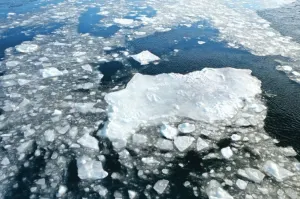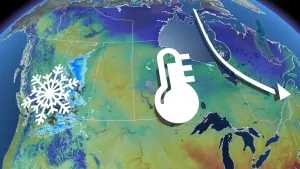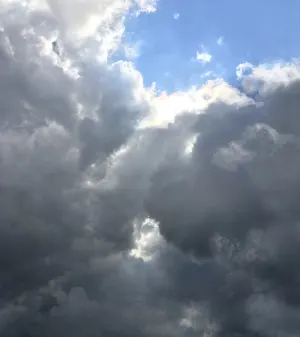
Here's where wildfire potential is on the rise this summer
Some parts of North America are drier than most, with some areas already seeing significant wildfires.
With summer around the corner, many people across North America are waiting to see how this summer's weather could shape up. Some western areas of the continent have been hard-hit by wildfires over the past few years, and summer 2019 could spell more trouble for those U.S. states or Canadian provinces that are still recovering from recent devastating wildfires.
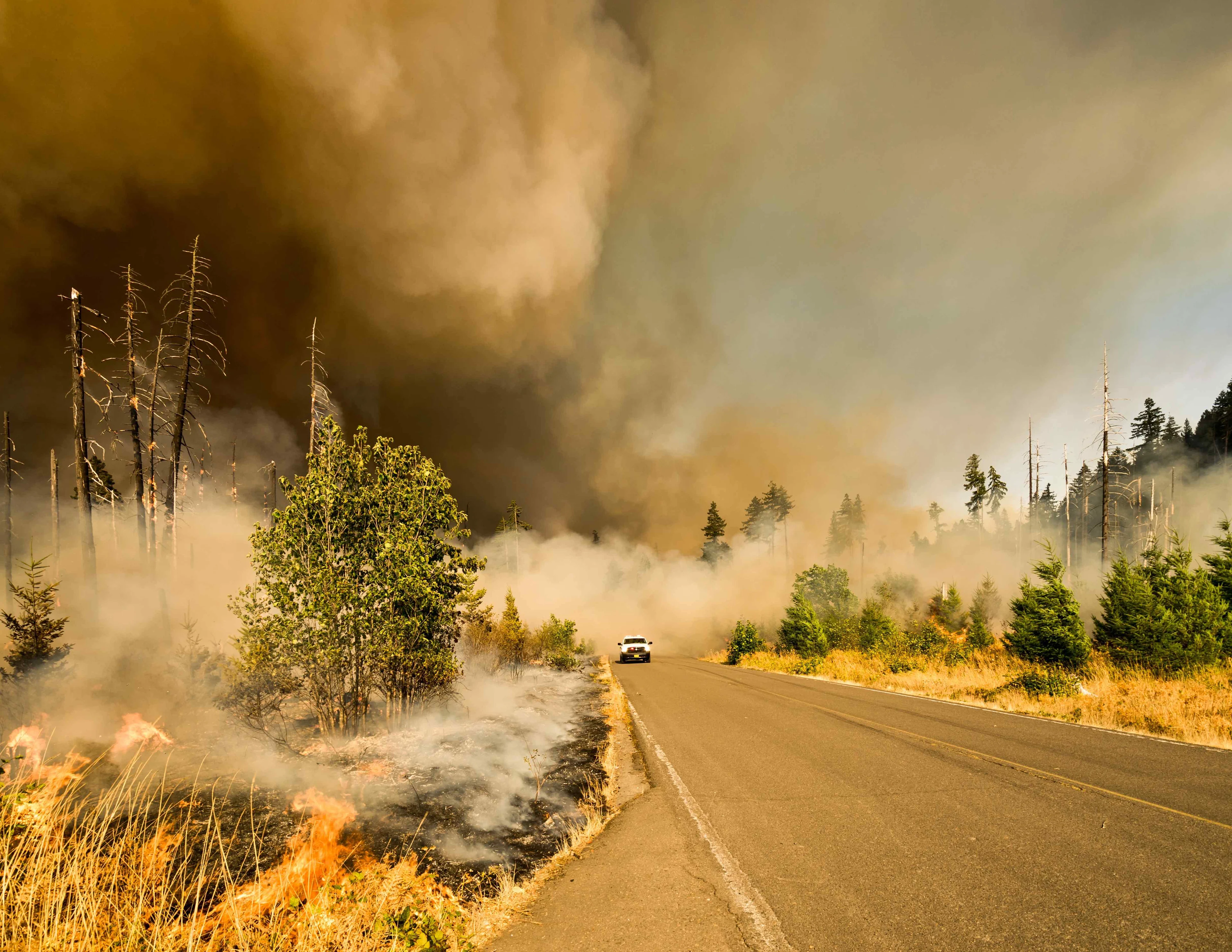
Each year, the summer months are influenced by a series of environmental factors that influence the potential for wildfire occurrence. For summer 2019, these are some of the principal considerations:
DROUGHT
Portions of western Canada saw prolonged dry weather in May, with the greatest impact across B.C., Alberta and southern Yukon. The southwestern border region between Canada and the U.S. continues to show drought conditions as well. All these areas affected by drier conditions have a higher risk of experiencing wildfires this summer.

EL NIÑO SOUTHERN OSCILLATION (ENSO)
El Niño has been modifying a variety of weather patterns across the continent for months now. The sea surface temperature anomaly pattern observed during the later part of spring indicates that a weak El Niño is still present, although it is expected to slowly weaken during the next few months. The latest forecasts indicate that the weakening of El Niño will continue through the summer months with more uncertainty as we move into Fall.
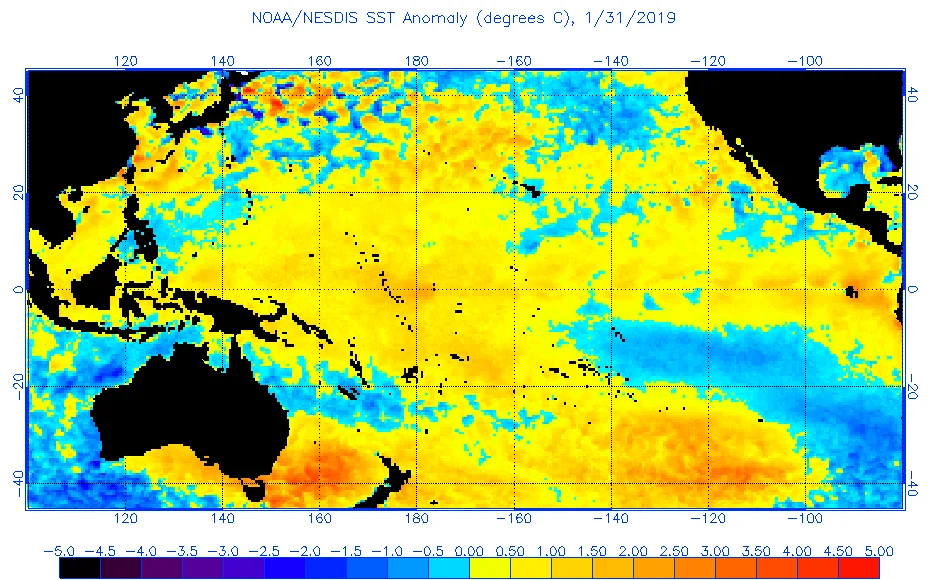
FIRE SEASON STATUS
As of June 4, 2019, Canada reported over 1,597 fires burning approximately 1,728,432 acres. Fire activity was assessed as above average across Alberta, which accounted for more than 90 per cent of the hectares burned so far this year, at 656,887 hectares over 558 fires.
While the number of wildfires increased in May in the U.S., fire activity remained well below average for the first five months of the year as the nation slowly entered fire season. So far this year, 12,752 wildfires have burned 113,579 hectares. This is well below the 10-year average of 25,309 wildfires that burn 547,694 hectares.
The North American Seasonal Fire Assessment and Outlook for summer 2019 shows how large areas of western North America are expected to experience above normal fire risk of wildfires. Here is a month to month breakdown for the U.S. and Canada this summer:
JUNE
Some areas of western Canada, show above normal levels predicted for the southern half of British Columbia and central and northern Saskatchewan and Manitoba.
A dry Spring in these provinces has fuelled an explosive fire growth, and on top of that, summer forecasts are calling for warmer drier weather across many areas of Canada.
In the U.S., many areas are still green except for the southwest, which is showing signs of a dry-up. Snowmelt is slower than other years, and there are some areas of California where there is growing concern with developing vegetation. Above-normal risk also extends into western Washington and some areas of the southeast like Georgia, South Carolina and the Florida Panhandle.

JULY
In Canada, the area at risk extends considerably across much of the western half of the country. Expect much above-normal levels for the southern two-thirds of British Columbia, central Alberta and Saskatchewan, and central and northern Manitoba.
In the western United States, July heat will help cure and dry some of the abundant vegetation covering large swaths of the region. Fire risk in portions of the Pacific Northwest and California should continue to increase, but it could also extend into areas of Arizona and southern Nevada and Utah. Above-normal fire conditions should persist in the southeast.
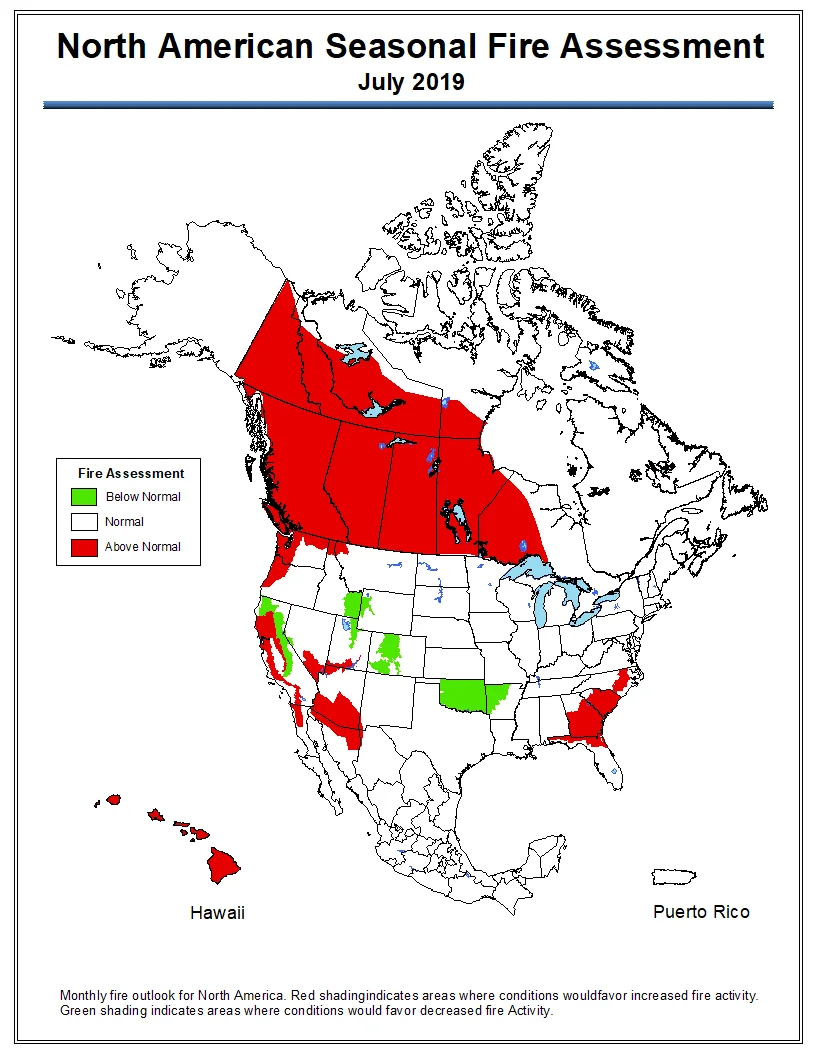
AUGUST
August will reduce the chance of fire weather in the northwest provinces of Canada, but above normal conditions could persist in British Columbia, Alberta, Saskatchewan and west-central Manitoba.
Meanwhile in the U.S., August could mean an increase in fire potential in most areas along the West Coast. Above-normal significant large fire potential is expected due to fuel loading and pre-existing dry conditions. A traditional winding down of the western fire season is expected in mid-September as fall moisture begins to arrive with incoming Pacific storms.








